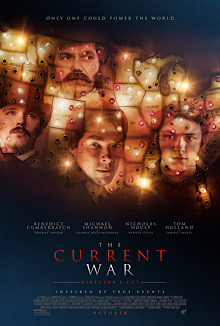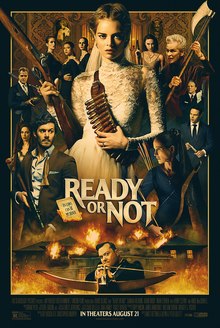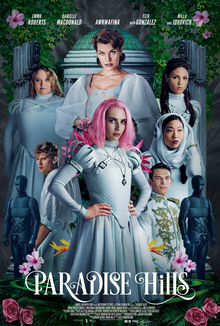Wouldn’t ya know it? It seems as though our bois over at Universal 1440 have been busy little beavers recently. Hot on the heels of a sequel that no one’s asked for since, at best, eight years ago, the 1440 crew graces us with a film that’s surprisingly not a long-distance sequel to some franchise or IP the studio holds in its greedy little clutches. Nope, this time ‘round we’ve got ourselves a reboot of one of their franchises! Yay!
Back in 2005, long-time DP-turned-director Andrzej Bartkowiak helmed the first of two video game adaptations (his next directorial outing would be the maligned-for-damn-good-reason Street Fighter: The Legend of Chun-Li), Doom. Like Chun-Li, Doom wasn’t extremely well-received by audience and critics, and its combination of barely-stock characters, garbage dialogue, sketchy visual effects, loose adaptation of the source material, and admittedly mildly entertaining bit of first-person madness hasn’t endeared the film to the passage of time. Seriously, it’s hilariously dated and strained when looking at it through today’s eyes. Not content with letting the franchise remain unadapted successfully (I will grant that a good adaptation could lead to a damn series of films, what with the open possibilities the source games have provided over the years), Universal tasked 1440 with relaunching the franchise, this time skewing a bit closer to its source material than its predecessor and certainly carrying a reduced budget and star power. Kids, let’s talk about Doom: Annihlation.

The plot, like I said, isn’t too far off from that of the original 1993 game: A group of marines is sent to Phobos, one of the moons of Mars, as a security detail for a scientific crew working on a teleportation device, among other just-below-board experiments. When they arrive, though, things have already begun to turn sideways on them, and they’re forced to walk into a bloody bloodbath as they’re assailed by creatures spawned from the teleportation experiment, which has essentially become a doorway to Hell. Fun times, right?
Much like Bartkowiak’s version, the filmmakers have wisely eschewed the facet of the games involving a lone soldier facing off against the hellspawn, as a group is easier to allow expanded fields of simultaneous action, as well as a range of potential personalities responding to the threats. The dynamism is necessarily boosted, and the film is able to avoid the pitfalls of ‘80s-style lone-wolf action flicks in the process. That being said, much like with the earlier adaptation, the group we follow isn’t much to write home about: The painfully stock characters from over a decade-and-a-half ago are replaced with bland nobodies (and a brusque, touchy Aussie) I had a hard time either remembering or distinguishing between, led by Amy Manson’s Joan Dark (cute, movie), who blends into the often dark backgrounds (how appropriate) with her lack of expression. The dialogue has definitely improved, in that it’s not an out-and-out collection of terrible lines meant to be delivered as cheesily as possible (as if it were even possible to deliver them otherwise), but it’s still pretty bland and uninteresting, no flair or personality to speak of, helping to explain why the characters follow suit so closely. The visual effects range from actually pretty solid – especially for the relatively low budget – to just plain dodgy (I’m looking at you, teleportation goo!), the cinematography is duller than an old spoon, and the lighting is flat and drab, making me wonder how we’re supposed to become invested in the allegedly thrilling and dangerous action unfolding before us.
I think the real killer, though, is the music. While the earlier film version tried to match the power and fervor of the game’s still-bumping soundtrack, it often got bogged down in lame nu-metal-style nonsense. Here, we take an even deeper step down, using washed-out stock music and the occasional track that sounds like a milquetoast rip-off of the 2005 selections. As you know, they’re out to make a quick buck with their existing IPs, so there’s no room for actual investment, kids. That’d be effort, and that’s verboten in the 1440 halls, so the music we get pales in comparison to even the 16-bit SNES tunes from the early ’90s.
Now, that’s being a bit harsh, even for a cash grab like this. I will admit that although the film is mostly dull, boring, and by-the-numbers, it’s not altogether a waste of time. It’s a decent-enough adaptation of the first game, albeit with plenty of quirks inherent in the adaptation process, there are some neat nods to the games sprinkled throughout, and the action – reminiscent of a lighter take on 30 Days of Night for most of it, just with more bullets – can be sufficient to sate you if you need a quick fix. It’s just hard to get past how uninteresting it is. A Doom adaptation should be dark, brooding, dripping with style just as much as with blood and gunpowder. This is just a bunch of people going through the motions, and it just so happens that those motions correspond to those found in a popular video game franchise. I can’t recommend the film, but if you’re curious, there’s a chance you won’t feel your time’s been stolen from you, and that’s actually a step up from the rest of 1440’s offerings. I’ll take improvement, no matter how incremental, dunno ‘bout yinz.









